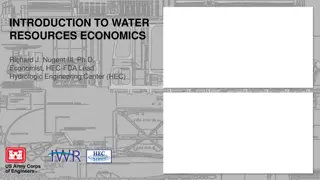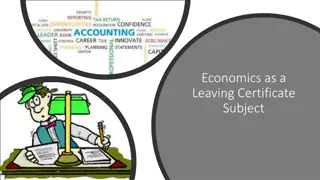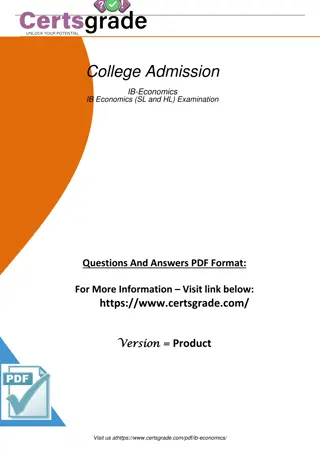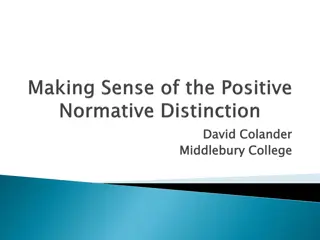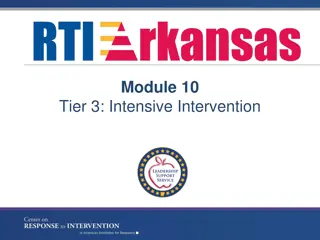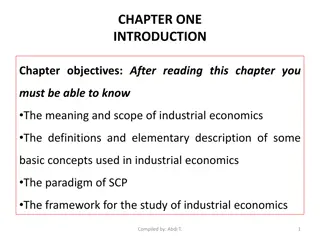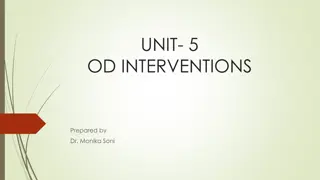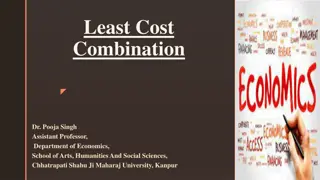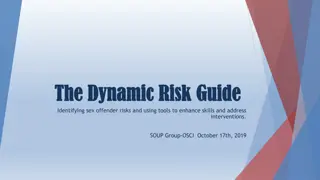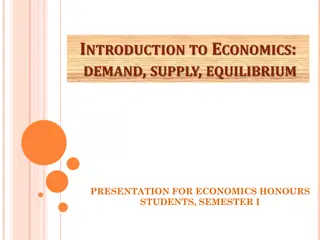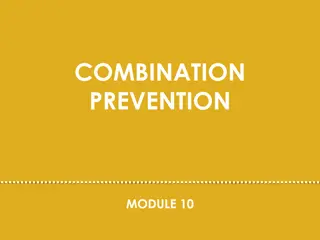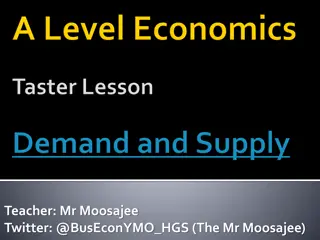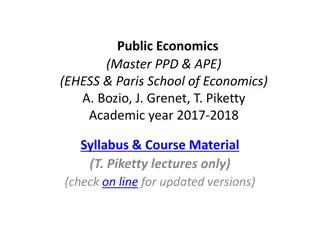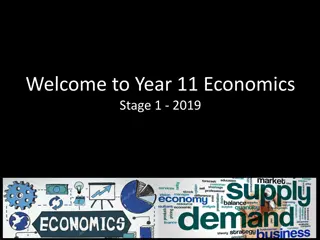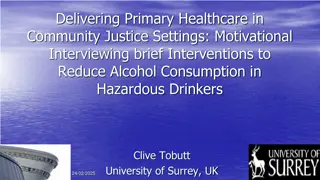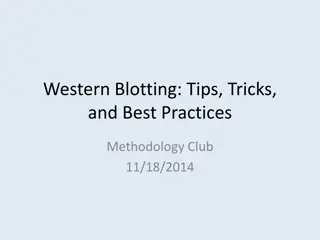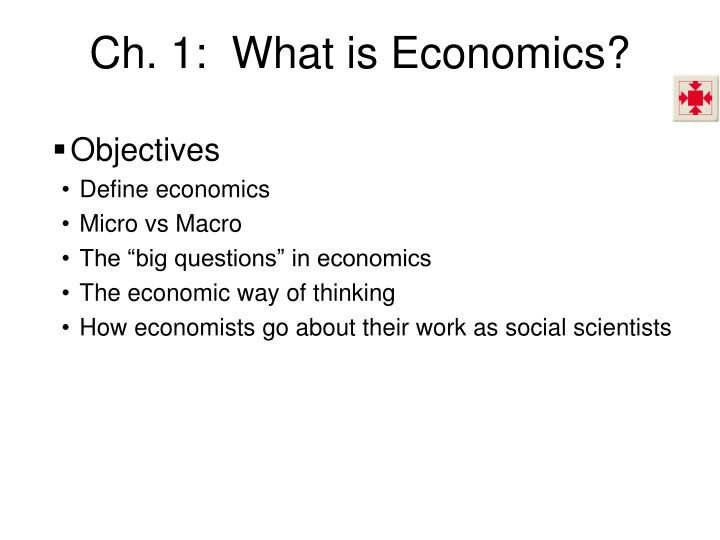
Economics: Concepts and Interventions
Economics is the study of choices amidst scarcity and incentives that influence decision-making. It encompasses microeconomics focusing on individual choices and macroeconomics analyzing national and global effects. Key aspects include economic questions, free market vs. command economy, government interventions, and economic growth drivers. Various viewpoints on government intervention, such as communists vs. capitalists and equity vs. efficiency, shape economic policies. Understanding these concepts is crucial in navigating economic systems and societal development.
Download Presentation

Please find below an Image/Link to download the presentation.
The content on the website is provided AS IS for your information and personal use only. It may not be sold, licensed, or shared on other websites without obtaining consent from the author. If you encounter any issues during the download, it is possible that the publisher has removed the file from their server.
You are allowed to download the files provided on this website for personal or commercial use, subject to the condition that they are used lawfully. All files are the property of their respective owners.
The content on the website is provided AS IS for your information and personal use only. It may not be sold, licensed, or shared on other websites without obtaining consent from the author.
E N D
Presentation Transcript
Ch. 1: What is Economics? but1 Objectives Define economics Micro vs Macro The big questions in economics The economic way of thinking How economists go about their work as social scientists
Definition of Economics but1 Social science that studies the choices that individuals, businesses, governments, and societies make as they cope with scarcity and the incentives that influence and reconcile those choices.
Micro vs Macro but1 Microeconomics study of choices made by individuals and businesses, and the influence of government on those choices. Macroeconomics study of the effects on the national and global economy of the choices that individuals, businesses, and governments make.
Economic Questions but1 What to produce? How to produce? Factors of production: Land Labor Capital Entrepreneurship For whom to produce?
Free market vs. Command but1 Free market allows individuals and businesses to decide without government intervention. Command centralizes all decisions. Mixed market is a combination of extremes. Examples: Education Transportation Energy
Types of government intervention but1 Direct control national defense, police, roads Price Controls Subsidies Ethanol, hybrid cars, crops, wind/solar energy, higher education Taxes Income, Sales, Property, Excise, Payroll, Tariffs Regulation Environmental Anti-trust Worker safety Laws designed to encourage competition.
Views on government intervention but1 Communists versus Capitalists Democrats versus Republicans Equity versus Efficiency
Economic Growth but1 Economic growth is an expansion in an economy s ability to produce goods and services. Economic growth is affected by: Capital goods vs consumer goods. Education and training. Research and development (new tech)
Why does income per capita vary so much around the world? but1 Source: IMF Data Mapper
The Economic Way of Thinking but1 Economists assume individuals compare costs and benefits in decision making. Cost is measured by opportunity cost. the highest-valued alternative that we give up to get something is the opportunity cost of the activity chosen.
The Economic Way of Thinking but1 Economists assume that people make decisions on the margin evaluate the consequences of making incremental changes in the use of their resources. Marginal Benefit (MB): the benefit from pursuing an incremental increase in an activity. Marginal Cost (MC): The opportunity cost of pursuing an incremental increase in an activity. If MB>MC pursue more of the activity. If MB<MC pursue less of the activity.
The Economic Way of Thinking but1 Economists assume people respond to incentives. Incentives affect MB or MC Taxes Subsidies Employer compensation methods. Incentives are key to reconciling self-interest and the social interest. Pollution Crime Fishing Water usage
The Economic Way of Thinking but1 Two types of economic statements: positive statements normative statements A positive statement can be tested by checking it against facts A normative statement cannot be tested.
The Economic Way of Thinking but1 Economic models a description of some aspect of the economic world that includes only those features of the world that are needed for the purpose at hand. Testing Models Experiments Real world data
The Economic Way of Thinking but1 Obstacles and Pitfalls in Economics Ceteris paribus (other things being the same): To isolate the effect of interest, economists use the logical device called ceteris paribus or other things being equal , or other things being the same . The fallacy of composition: The false conclusion that what is true for the parts is true for the whole what is true for the whole is true for the parts. The post hoc fallacy the error of reasoning that a first event causes a second event because the first occurs before the second

